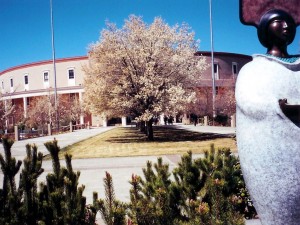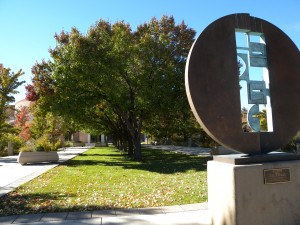Posts Tagged ‘New Mexico’
» posted on Thursday, December 31st, 2015 by Linda Lou Burton
Am I Blue?
 Linda Burton posting from Arkadelphia, Arkansas – When is the best time to put a jigsaw puzzle together? A rainy day seemed right, when Brother was visiting during Thanksgiving week. I pulled out the State Flags and Capitols box I’d been saving for just such a day and dumped all one thousand pieces onto the card table. Brother raised an eyebrow and shook his head. I let tiny puzzle pieces filter through my fingers, trying to think of a working plan.
Linda Burton posting from Arkadelphia, Arkansas – When is the best time to put a jigsaw puzzle together? A rainy day seemed right, when Brother was visiting during Thanksgiving week. I pulled out the State Flags and Capitols box I’d been saving for just such a day and dumped all one thousand pieces onto the card table. Brother raised an eyebrow and shook his head. I let tiny puzzle pieces filter through my fingers, trying to think of a working plan.  “What strategy should I use?” I asked. “Colors,” was his reply. Now, generally speaking, that is good jigsaw strategy. But when the picture is 50 state flags, well that’s when you discover that most state flags are blue. In fact, only four state flags don’t have at least a touch of blue in them – Alabama, California, Maryland, and New Mexico.
“What strategy should I use?” I asked. “Colors,” was his reply. Now, generally speaking, that is good jigsaw strategy. But when the picture is 50 state flags, well that’s when you discover that most state flags are blue. In fact, only four state flags don’t have at least a touch of blue in them – Alabama, California, Maryland, and New Mexico.
The puzzle pieces sat in a pile for several days, as I half-heartedly tried to sort blue from blue from blue. After brother left, I raked everything back into the box and headed for my sewing basket. Being heavily dependent on Excel spreadsheets to help me organize almost everything in life, I grabbed a spool of thread and the scissors and with a little Scotch tape turned the 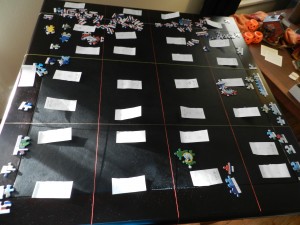 card table into Columns and Rows. Then I put Post-Its into each section marking which state fit where. Aha! I dug into those thousand pieces again looking for words. “Mon” went into the Montana section, “sas” into the Arkansas slot; I was on a roll! How many flags have outspread eagle wings? Just two – Iowa and North Dakota. Plop plop. The palm tree went to Hawaii; the horses to Pennsylvania, the bison belonged to Wyoming. The challenge began to be fun, and (with magnifying glass in hand) I began to notice the details within the flags. I didn’t expect to have a learning experience, but that is exactly what happened. In my two-year Journey to 50 states, I didn’t pay much attention to the state flags. But suddenly I realized that flags are the story-telling devices of the state. And I love a good story! » read more
card table into Columns and Rows. Then I put Post-Its into each section marking which state fit where. Aha! I dug into those thousand pieces again looking for words. “Mon” went into the Montana section, “sas” into the Arkansas slot; I was on a roll! How many flags have outspread eagle wings? Just two – Iowa and North Dakota. Plop plop. The palm tree went to Hawaii; the horses to Pennsylvania, the bison belonged to Wyoming. The challenge began to be fun, and (with magnifying glass in hand) I began to notice the details within the flags. I didn’t expect to have a learning experience, but that is exactly what happened. In my two-year Journey to 50 states, I didn’t pay much attention to the state flags. But suddenly I realized that flags are the story-telling devices of the state. And I love a good story! » read more
» posted on Wednesday, September 30th, 2015 by Linda Lou Burton
An Invite From CRAG
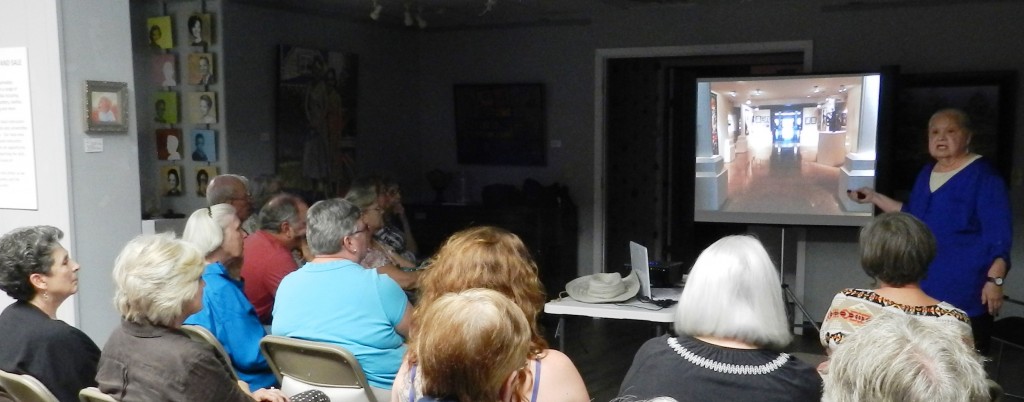 Linda Burton posting from Arkadelphia, Arkansas — I was invited to speak at the September 24 meeting of the Caddo River Art Guild (CRAG), an avid group whose mission is promoting art and artists in south central Arkansas, http://caddoriverartguild.com/. My mission of course is capital cities, so I talked about “art in the capital cities,” that is, the community’s support of the arts. How Art Thrives was my topic, leading with the question: What does it take to have a thriving arts community?
Linda Burton posting from Arkadelphia, Arkansas — I was invited to speak at the September 24 meeting of the Caddo River Art Guild (CRAG), an avid group whose mission is promoting art and artists in south central Arkansas, http://caddoriverartguild.com/. My mission of course is capital cities, so I talked about “art in the capital cities,” that is, the community’s support of the arts. How Art Thrives was my topic, leading with the question: What does it take to have a thriving arts community?
It takes four things, I proposed, to nods of agreement from around the room:
• Money
• Artists
• Volunteers
• Attitude
I selected five uniquely different cities to illustrate:
Santa Fe, New Mexico, Population 67, 947 (about 6 Arkadelphias) because it supports and focuses on the artist more than any other capital city.
Montpelier, Vermont, Population 7,855 (about 3/4 of 1 Arkadelphia!) because it’s the smallest capital city and has the 2nd most artists per capita and the biggest group of volunteers.
And Helena, Montana, Population 28,190 (about 3 Arkadelphias), Lincoln, Nebraska, Population 258,379 (about 24 Arkadelphias), and Indianapolis, Indiana, Population 820,444 (about 77 Arkadelphias) to show it’s not the size of the city that matters, it’s the attitude of its residents. » read more
» posted on Monday, November 5th, 2012 by Linda Lou Burton
Simplicity in Symbolism
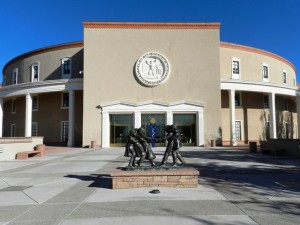 Linda Burton posting from Santa Fe, New Mexico – Clean modern lines reflecting ancient traditions – how do you combine that into a stunning and meaningful setting appropriate for the business of the state? New Mexico is one of the newer states (47th in 1912) and now has one of the newer capitol buildings (dedicated 1966). It also has the oldest – the Palace of Governors (1609) still stands on the north side of the Plaza, as the state museum. In between, New Mexico had an elaborate Victorian capitol (1886) which citizens called “audacious” and a traditional capitol with a silver dome (1900) which was often criticized as not being appropriate for the state; in 1950 the dome was removed. Building #4 seems to have done the trick for New Mexico; its New Mexico Territorial style – that unique combo of Greek Revival and Pueblo adobe – fits the ambiance, and the sensibilities, of the capital city. When viewed from above you can see that the unusual circular building resembles the Zia Sun Symbol, with four entrance wings protruding from the main center. That Zia symbol represents values important to the people of New Mexico. » read more
Linda Burton posting from Santa Fe, New Mexico – Clean modern lines reflecting ancient traditions – how do you combine that into a stunning and meaningful setting appropriate for the business of the state? New Mexico is one of the newer states (47th in 1912) and now has one of the newer capitol buildings (dedicated 1966). It also has the oldest – the Palace of Governors (1609) still stands on the north side of the Plaza, as the state museum. In between, New Mexico had an elaborate Victorian capitol (1886) which citizens called “audacious” and a traditional capitol with a silver dome (1900) which was often criticized as not being appropriate for the state; in 1950 the dome was removed. Building #4 seems to have done the trick for New Mexico; its New Mexico Territorial style – that unique combo of Greek Revival and Pueblo adobe – fits the ambiance, and the sensibilities, of the capital city. When viewed from above you can see that the unusual circular building resembles the Zia Sun Symbol, with four entrance wings protruding from the main center. That Zia symbol represents values important to the people of New Mexico. » read more
» posted on Saturday, November 3rd, 2012 by Linda Lou Burton
The Air and The Waters
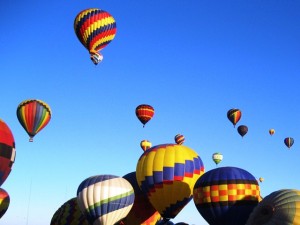 Linda Burton posting from Santa Fe, New Mexico – “The air.” That has been the answer by many as I have asked the question “What do you like best about Santa Fe?” Santa Fe is the country’s highest capital city with an elevation of 7,000 feet, give or take a few depending on which side of town you’re on. It is high desert country, with about 320 days of sunshine a year. It sits at the foot of the Sangre de Cristo Mountains, that sub-range of the Rockies that extends 240 miles from Colorado into New Mexico. Near Taos to the north is Wheeler Peak, New Mexico’s highest point, at 13,161 feet; just outside Santa Fe is Truchas Peak, at 13,102. So here you have a pretty place where the sun almost always
Linda Burton posting from Santa Fe, New Mexico – “The air.” That has been the answer by many as I have asked the question “What do you like best about Santa Fe?” Santa Fe is the country’s highest capital city with an elevation of 7,000 feet, give or take a few depending on which side of town you’re on. It is high desert country, with about 320 days of sunshine a year. It sits at the foot of the Sangre de Cristo Mountains, that sub-range of the Rockies that extends 240 miles from Colorado into New Mexico. Near Taos to the north is Wheeler Peak, New Mexico’s highest point, at 13,161 feet; just outside Santa Fe is Truchas Peak, at 13,102. So here you have a pretty place where the sun almost always 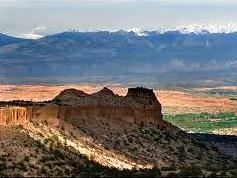 shines, it doesn’t get too hot or too cold, and the air is clean. Very attractive! Santa Fe air has been attracting people for thousands of years; it appears to have both an inspirational and a healing effect on those who come. John Gaw Meem (the architect) came to recover from tuberculosis in 1920, where he met Carlos Vierra (the artist) at Sunmount Sanatorium (we’ve already talked about them). Sunmount was in business from the early 1900’s to that point in time when medication became available for the disease; it offered patients clean dry air and a chance to rest, far from the pressures of the madding crowd. » read more
shines, it doesn’t get too hot or too cold, and the air is clean. Very attractive! Santa Fe air has been attracting people for thousands of years; it appears to have both an inspirational and a healing effect on those who come. John Gaw Meem (the architect) came to recover from tuberculosis in 1920, where he met Carlos Vierra (the artist) at Sunmount Sanatorium (we’ve already talked about them). Sunmount was in business from the early 1900’s to that point in time when medication became available for the disease; it offered patients clean dry air and a chance to rest, far from the pressures of the madding crowd. » read more
» posted on Thursday, November 1st, 2012 by Linda Lou Burton
A Petri Dish of Culture
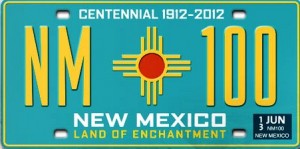 Linda Burton posting from Santa Fe, New Mexico – Everybody loves a party, and there’s been a big one going on this year in New Mexico. It’s a Centennial year, celebrating New Mexico’s 100 years of statehood; on January 6, 1912 it became the 47th state. Festivals and events have been happening from one corner of the state to the other; there was even a Culture Pass for sale! It cost $25 and offered access to the 8 museums and 6 monuments that fall within the aegis of New Mexico’s Department of Cultural Affairs. http://www.newmexicoculture.org/index.php . This department, headquartered in Santa Fe, was created back in 1978 and, according to its website, is dedicated to “preserving and celebrating the cultural integrity and diversity of our state.” It oversees a broad range of New Mexico’s arts and cultural heritage agencies (15 divisions);
Linda Burton posting from Santa Fe, New Mexico – Everybody loves a party, and there’s been a big one going on this year in New Mexico. It’s a Centennial year, celebrating New Mexico’s 100 years of statehood; on January 6, 1912 it became the 47th state. Festivals and events have been happening from one corner of the state to the other; there was even a Culture Pass for sale! It cost $25 and offered access to the 8 museums and 6 monuments that fall within the aegis of New Mexico’s Department of Cultural Affairs. http://www.newmexicoculture.org/index.php . This department, headquartered in Santa Fe, was created back in 1978 and, according to its website, is dedicated to “preserving and celebrating the cultural integrity and diversity of our state.” It oversees a broad range of New Mexico’s arts and cultural heritage agencies (15 divisions); 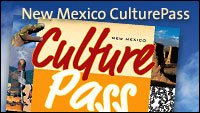 there are 500 employees and about a thousand volunteers who put in 70,000 hours annually. Every year more than $2 million goes directly to New Mexico’s cultural activities to fund arts and cultural programs; over three million people are served. But back to that Culture Pass, and the doors it would open. » read more
there are 500 employees and about a thousand volunteers who put in 70,000 hours annually. Every year more than $2 million goes directly to New Mexico’s cultural activities to fund arts and cultural programs; over three million people are served. But back to that Culture Pass, and the doors it would open. » read more
» posted on Tuesday, October 30th, 2012 by Linda Lou Burton
They Get It
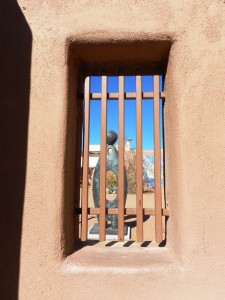 Linda Burton posting from Santa Fe, New Mexico – “There is no other place in the country where cultures meet, and blend, like they do here.” So said Maria, explaining to me why she loves Santa Fe so much. My first question to her was “Why are all the buildings brown?” She answered that the southwest adobe style was the heritage of centuries past. Maria, a Greek transplant from Chicago, laughed as she pointed out her dark hair and skin tones. “People think I’m Spanish,” she continued, “and because I speak Spanish fluently, I fit in here from the first day. I get what this city is all about. Some people don’t. I can see it on their face; they seem puzzled by what they interpret as ‘sameness.’ To me, it is a love and respect for the land, and for the traditions of the past. As a child I visited my grandparent’s farm in Greece; they lived simply and wasted nothing. They used what they had, and that’s what Native Americans did here centuries ago. They had sand and clay and water and straw; that’s what they used to make their houses. Their houses were earth-toned because they were made of earth! That tradition is held today in Santa Fe. And besides, it’s the law.” The law? After my conversation with Maria, I did some research into the city’s history. I found The Ordinance of 1957, and I learned about John Gaw Meem. » read more
Linda Burton posting from Santa Fe, New Mexico – “There is no other place in the country where cultures meet, and blend, like they do here.” So said Maria, explaining to me why she loves Santa Fe so much. My first question to her was “Why are all the buildings brown?” She answered that the southwest adobe style was the heritage of centuries past. Maria, a Greek transplant from Chicago, laughed as she pointed out her dark hair and skin tones. “People think I’m Spanish,” she continued, “and because I speak Spanish fluently, I fit in here from the first day. I get what this city is all about. Some people don’t. I can see it on their face; they seem puzzled by what they interpret as ‘sameness.’ To me, it is a love and respect for the land, and for the traditions of the past. As a child I visited my grandparent’s farm in Greece; they lived simply and wasted nothing. They used what they had, and that’s what Native Americans did here centuries ago. They had sand and clay and water and straw; that’s what they used to make their houses. Their houses were earth-toned because they were made of earth! That tradition is held today in Santa Fe. And besides, it’s the law.” The law? After my conversation with Maria, I did some research into the city’s history. I found The Ordinance of 1957, and I learned about John Gaw Meem. » read more
» posted on Sunday, October 28th, 2012 by Linda Lou Burton
Hushpuppies
Linda Burton posting from Santa Fe, New Mexico – I’m in Santa Fe now, my break is over and I’m back on Capital City duty again. I’ll be hard at work exploring this fascinating capital city for the next two weeks. And tasting the tasty cuisine that I’ve read so much about. My plan today was Sunday brunch. According to the internet, Tecolote offered the “best breakfast in town” and it was just down the street from me; after that I would check out the beautiful pink adobe state capitol. I failed to write the Tecolote address on a post-it note; the GPS will know the name, I thought. It did not; alas, I never found it. Onwards toward the capitol; one-way streets round the Plaza; the Sunday leisure crowd. Restaurants everywhere. Parking not. Curving roads. Right-turn only lanes that caught me unaware.
Crosseyed and addlebrained and getting nowhere fast, I finally spotted a sign pointing to the Visitor Center. Ahh. Maps! Brochures! Directions! The capitol was just across the street, I was advised. I crossed, but the beautiful pink adobe I remembered from my visit in 1999 was nowhere to be seen. I remembered the sidewalks and the trees planted between; OMG they’ve grown! Bushy and still in full leaf, they obliterated any street view of the building. Planters have been added; more greenery in the way. And where’s the statue of Earth Mother? I found her over to the left, backed by a mass of trees; not only moved but replaced. The final surprise: the capitol is closed on Sundays. » read more
» posted on Thursday, August 2nd, 2012 by Linda Lou Burton
Rocky Mountain Roads
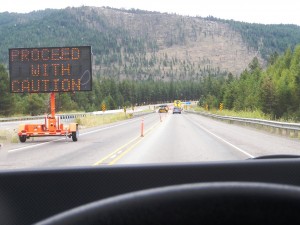 Linda Burton posting from Helena, Montana – Just an ordinary day in the life of a cross-country traveler. I crossed Clark Fork sixteen times, was slowed by orange road-work cones seven times, stopped for gas two times, and observed a smashed-to-pieces motorhome one time. Actually I saw the smash-up twice – once on the freeway at the scene of the “incident” (as the Montana temporary highway markers defined it); later when stopped at the St Regis Travel Plaza (where they serve huckleberry shakes). A truck hauled a piece of it in; I shivered at the sight, a shambles of dangling wiring, a sink poised in the upper corner as it lay pitifully on its side. What happened to the people? What happened to their dishes? What happened to their plans? Were they headed cross-country like me, or did they just want to spend a week parked by the creek, fishing peacefully? I gave a pat to my sturdy Scion, thankful we were safe. » read more
Linda Burton posting from Helena, Montana – Just an ordinary day in the life of a cross-country traveler. I crossed Clark Fork sixteen times, was slowed by orange road-work cones seven times, stopped for gas two times, and observed a smashed-to-pieces motorhome one time. Actually I saw the smash-up twice – once on the freeway at the scene of the “incident” (as the Montana temporary highway markers defined it); later when stopped at the St Regis Travel Plaza (where they serve huckleberry shakes). A truck hauled a piece of it in; I shivered at the sight, a shambles of dangling wiring, a sink poised in the upper corner as it lay pitifully on its side. What happened to the people? What happened to their dishes? What happened to their plans? Were they headed cross-country like me, or did they just want to spend a week parked by the creek, fishing peacefully? I gave a pat to my sturdy Scion, thankful we were safe. » read more
» posted on Saturday, March 17th, 2012 by Linda Lou Burton
Times Three
Linda Burton posting from Sierra Vista, Arizona while traveling from Austin, Texas to Phoenix, Arizona— 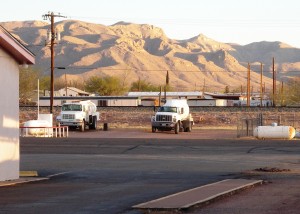 I wake up on Central Daylight Time. Bright sun shadows the face of the Sierra Diablos across the street. The car is loaded by 7:23; I see I’m almost out of gas. One stop, and then we’re on the road. An elevation climb, my ears can feel the pressure change, we’re going through a pass. A sign announces “Mountain Time.” I’ve gained an hour. But I’m still in Texas, will be for a long, long while. The limit is 80 mph, I do not hesitate, I fly.
I wake up on Central Daylight Time. Bright sun shadows the face of the Sierra Diablos across the street. The car is loaded by 7:23; I see I’m almost out of gas. One stop, and then we’re on the road. An elevation climb, my ears can feel the pressure change, we’re going through a pass. A sign announces “Mountain Time.” I’ve gained an hour. But I’m still in Texas, will be for a long, long while. The limit is 80 mph, I do not hesitate, I fly.
The Eagle Mountains to my left, the Quitman’s too; the Finlay’s to my right. Peaks are 7,000 feet, wide valleys flatten out between. The GPS begins to show a darkened spot, a thick line very near the little car that mimics me. I stop and check the map; yes, Mexico is just there to my left, I know the Rio Grande is flowing there, the border mark.
Traffic thickens, El Paso drawing near, with Juarez on the other side, a troubled city, always in the news. Murder Capital of the World, they say. I need more gas, but everything is tense, so many lanes, so many curves, I wait, to come out on the other side. A break somewhere past the UTEP sign, a gorgeous mall, set high up in the hills. I’ve been driving for a long, long time.
And then I’m in New Mexico. The pavement changes, smooth, the lanes are wide, a sign assures you of a safety zone. Enchanted land, brilliant color, yellow flowers blooming in white sands. The Continental Divide! 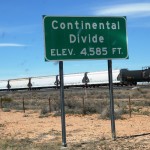 I stop to get a picture, close, I was here so many years ago, when kids were young. Now I have cats. Jack yawns in boredom, a wild-eyed panther look. “We’re really in the west,” I say, “where you were born.” There is nothing anywhere but souvenirs; gas is 20 miles ahead, they say. Los Cruces is a US Customs stop; the Border Dog doesn’t sniff my car.
I stop to get a picture, close, I was here so many years ago, when kids were young. Now I have cats. Jack yawns in boredom, a wild-eyed panther look. “We’re really in the west,” I say, “where you were born.” There is nothing anywhere but souvenirs; gas is 20 miles ahead, they say. Los Cruces is a US Customs stop; the Border Dog doesn’t sniff my car.
Keep driving. Arizona next. The road looks old, worn out. I gain another hour. No sign announces, but I know, Arizona doesn’t favor Daylight time. Three time zones in one day for me. The headwind pushes back against the car; the freeway signs flash “Dust storms just ahead, pull off the road when you can’t see.” In the distance I see swirls, I am gone before they get to me.
I’m tired. I want to stop. Nature take some pity then, rewards me with its awesome sights; Texas Canyon has huge boulders like I’ve never seen. I know that I can make it now, and sure enough, the sign appears where I’m supposed to turn. I’m headed southward now, where family waits for me.
All’s well, except I’m not quite sure what time it is.

